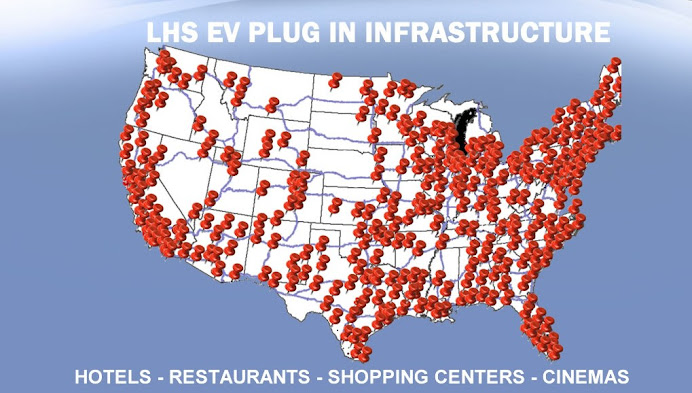 When President Obama announced on the campaign trail that he wanted to see a million plug-in hybrids on American roads by 2015, people thought he was dreaming. One company that is taking the goal seriously is Bright Automotive, which thinks it can, all by itself, make more than a tenth of those cars (150,000) by the deadline.
When President Obama announced on the campaign trail that he wanted to see a million plug-in hybrids on American roads by 2015, people thought he was dreaming. One company that is taking the goal seriously is Bright Automotive, which thinks it can, all by itself, make more than a tenth of those cars (150,000) by the deadline. Indiana-based Bright, a commercial spinoff of the nonprofit Rocky Mountain Institute, is launching an AWD PHEV delivery van with a one-ton payload (180 cubic feet) and 30 miles (50 km) of all-electric driving range (and then 370 miles / 595 km more from a four-cylinder gas engine). Bright’s target is large corporate fleets with centralized recharging facilities, and it’s talking to Duke Energy, Coca-Cola,PG&E, Cox Communications and Johnson Controls, among others.
To make its plans operational, the company wants to have its factory (somewhere in the Rust Belt) operational by 2012, and has asked for a $450 million DOE loan toward that end. The DOE funds are vital, as Vice President Michael Brylawski explains, because venture capital is so hard to obtain in the current environment. “Bright has suppliers lined up, it’s rapidly getting its customers in line, and it has an operational plan all ready. All we need is capital. Add water and the seed will grow.” Bright has an engineering services division that can pay the bills and keep the doors open, Brylawski explains, but if it’s going to produce 150,000 PHEVs by 2015 it needs capital, and the feds are the lender of last resort.
CEO John Waters, who was one of the creators of the GM EV-1 battery pack, says in an op-ed piece that he hopes, in the second round of funding, that more of the funding will go to start-up companies (only Tesla was funded in the first round). “It is now clear that the auto industry can no longer be defined by a handful of dominant automakers,” he wrote. “Dozens of companies, from Massachusetts to Indiana to California, are quietly and persistently working to address this new automotive future. If the feds fund Bright, he said, “the investment will allow us to efficiently produce hundreds of thousands of plug-in vehicles and create about 5,000 U.S. jobs in the next five years.” The customers don’t necessarily need to be green minded. “The Idea will significantly reduce our operating costs,” says Mike Allison of Duke Energy.
In its brochure, Bright emphasizes the money-saving aspects. A 250-vehicle fleet, it says, would save more than $500,000 in fuel costs annually, or 10 cents per mile. Bright says that the average delivery vehicle gets less than 15 mpg, as compared to the 100 mpg it claims for the Idea (though we’re probably going to need a whole new way of measuring plug-in hybrids and battery cars). Felix Kramer, founder of CalCars.org and in many ways the father of the American plug-in hybrid movement, says Bright “knows what it is doing and has great corporate partners as well as great experience in the auto industry. They’ve really done their homework.” Kramer thinks Obama’s one million plug-in cars by 2015 goal is achievable, and so does Henrik Fisker of Fisker Automotive., whose own high-performance Karma plug-in hybrid will be on the road later this year.
“Yes, Obama’s goal is achievable and Fisker Automotive will do its part to help fulfill that goal,” he said. “We expect the Karma to reach production of 15,000 cars per year in 2011, and our future high volume, low-cost vehicle will push that number well over 100,000 per year.” So that’s 10% of the goal, too. Until it actually starts building Ideas, Bright will get its team to work converting T-5 Volkswagen Transporter vehicles (not currently sold in the U.S.) to plug-in hybrid status. The conversion should have 22 mile range (35 km) in all-electric mode, and 57 mpg (4.1 l/100km) overall. The Transporter is available in several configurations, and will presumably be offered as a cargo van, passenger van or pickup truck.
Source : Industry bNet, by Jim Motavelli, September 4th, 2009

Aucun commentaire:
Enregistrer un commentaire